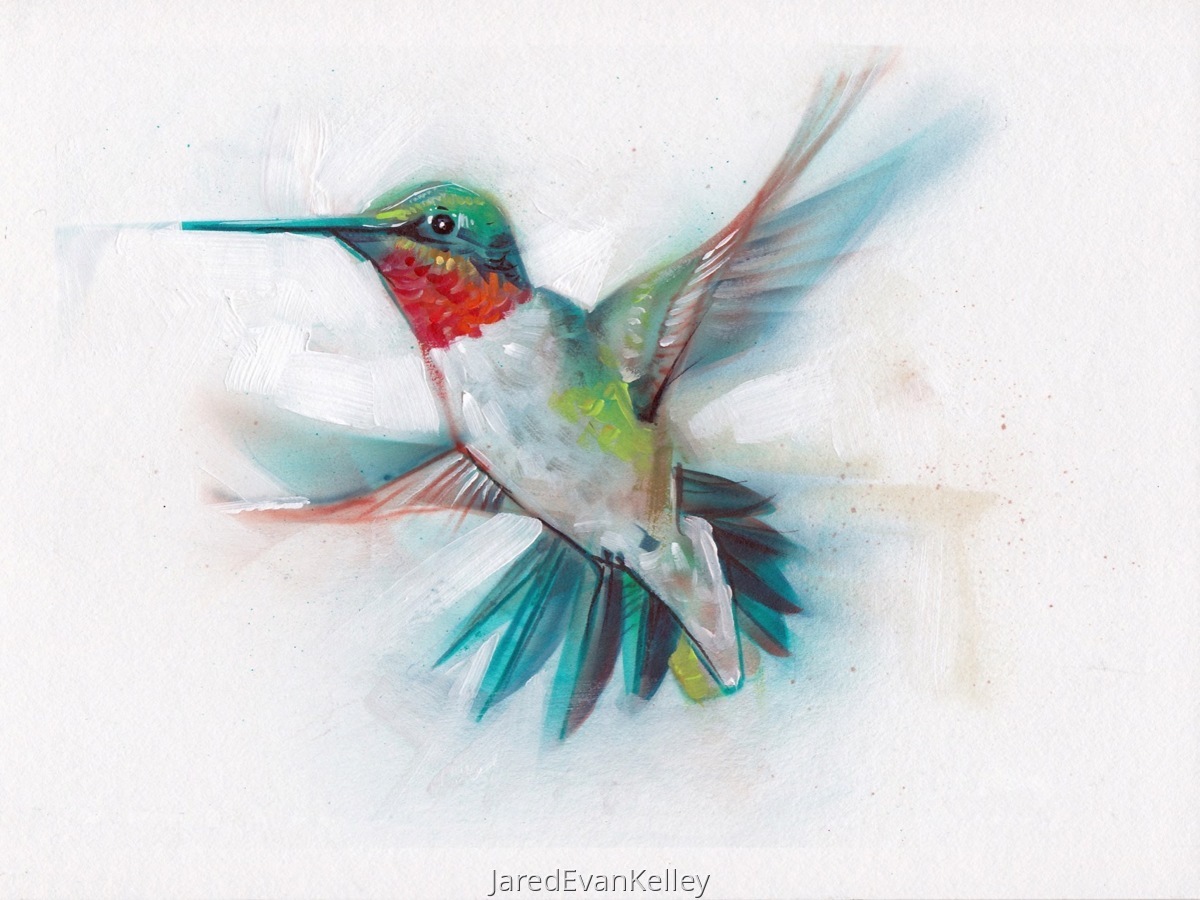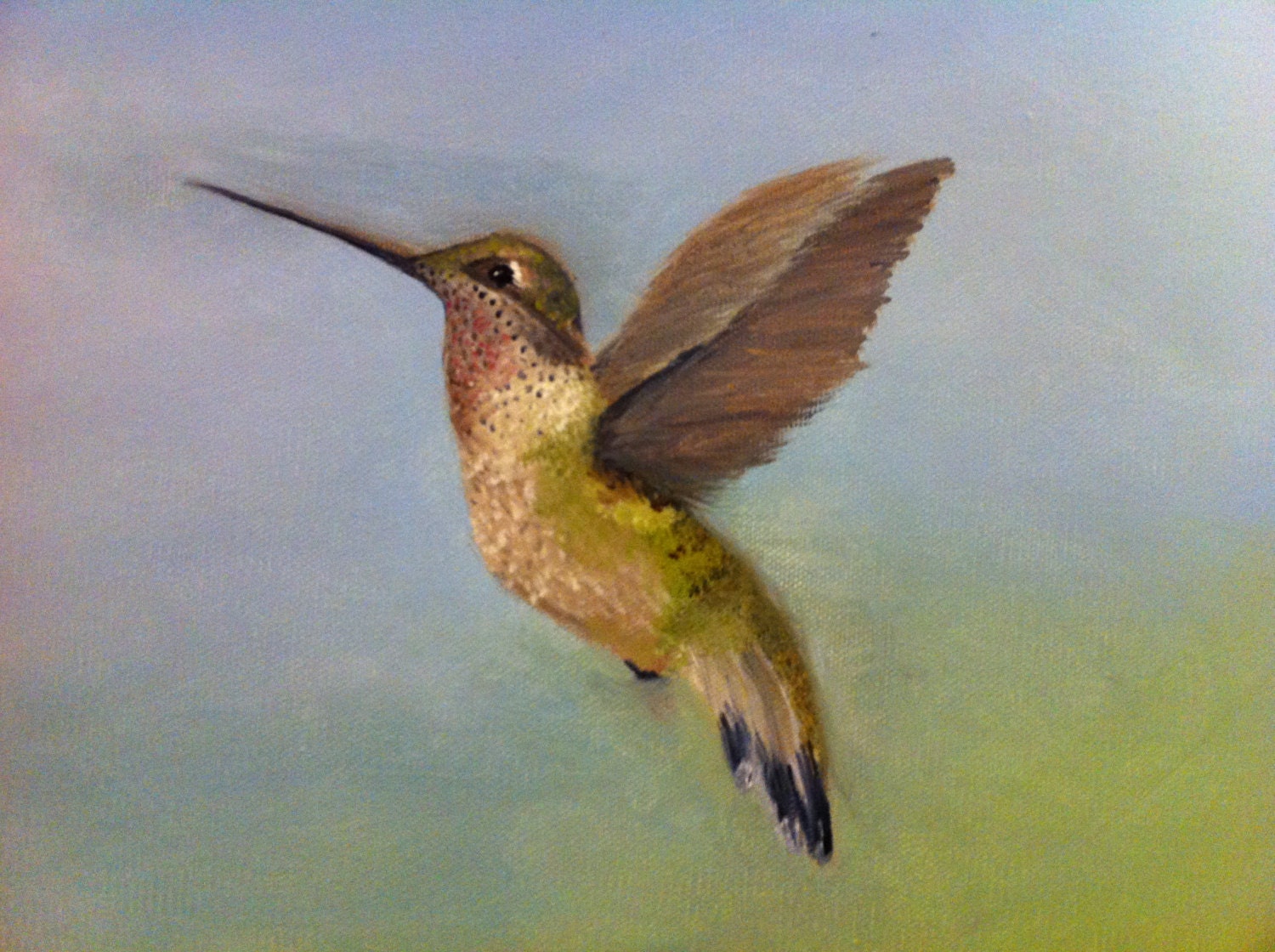

I’ll be the first to admit that this is approach is exactly backwards from what you’ll learn in any actual watercolor class. If you’re not using ink like a crutch (like me!) then maybe do this step with a lighter hand.

I can get away with this because of the heavy ink work I do at the end. You may also note that my base drawing is way darker than most of what you’ll see in respectable watercolors. HINT: it’s all in the way the feathers lay on top of each other. After many, many months of drawing and painting pretty marginal birds I think I’m getting closer to something I’m happy with.

I’ll usually start trying to stay as true to the reference as possible, but always end up deviating at some point to end up with a more stylized approach (in this case to the feathers). I recommend the Google machine, just remember: using references for components of your composition is fine, stealing someone else’s composition is very, very bad. Not unless they’ve already painted a whole bunch of hummingbirds, and I guarantee they, too, had to use references for much of the way. Does anyone really know what a hummingbird looks like? No. *none of these steps are particularly easy, sorry.įind a good reference picture. Let me share that way with you now!Ĭome and join me on a journey through painting hummingbirds in seven easy* steps! I seem to be settling into a particular style through no conscious choice of my own, and while I’m confident that there are easier ways to achieve this, I just really, really seem to gravitate towards using watercolors in the most pointlessly complicated way possible. Hi friends! I just finished what may be my most challenging piece ever and my hand is still sore.


 0 kommentar(er)
0 kommentar(er)
